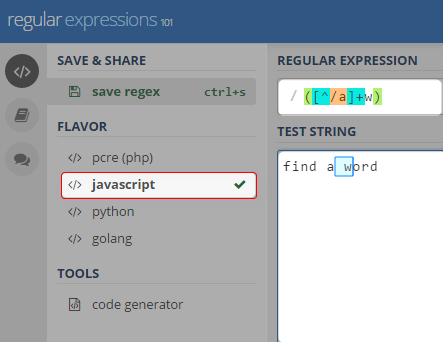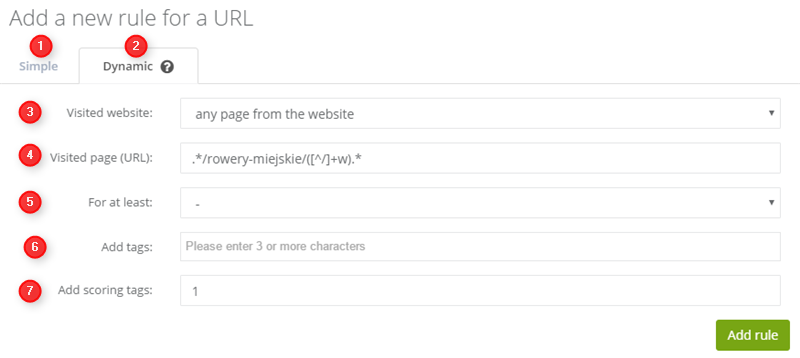In a normal segmentation matrix, URLs are entered – contacts who visit these URLs are assigned specified tags.
In some situations, you may prefer to create new tags directly from fragments of those URLs.
Let’s consider the following example:
http://www.skleprowerowy.pl/rowery-miejskie/wigry-3/index.htm
If you wanted SALESmanago to take a part of this address (for example ‘wigry-3’), combine it with a tag ‘visited’ to create ‘visited_wigry-3’ and use it to tag a contact, there are two options. One is to add a separate string in the segmentation matrix for each product (which can be very time intensive) and update it for every new product.
The second option is more efficient, but it works well only if your website uses a consistent link structure (for example “/domain_name/product_category/product_name” or similar). This option is the dynamic matrix – it can create tags automatically from specified parts of an address.
Dynamic matrices rely on regular expressions.
IMPORTANT: In some cases, while working with regular expressions, the help of an IT professional may be necessary. Regular expressions often have complex structures.
See the comprehensive 101 of regular expressions here>>
.
HOW TO CREATE A DYNAMIC MATRIX?
Go to Wizards → Segmentation Matrices. By default, the Simple [1] matrix is selected, so change it to Dynamic [2], and then choose a page on your monitored website where you want the matrix to be active [3].
In URL [4] specify which part of the URL you want to use for creating the tag by adding an appropriate regular expression in its place.
In For at least: [5] specify the minimum amount of time a user visit must last for the matrix rule to assign a tag.
In Add tags [6] enter which of the existing tags you want to add using this rule,
In Add scoring to tags [7] specify how many scoring points you want to assign to each tag whenever this rule activates. Then click Add rule to add this rule to the segmentation matrix. You can add multiple rules to one matrix.
For this example, the regular expression is as follows:
.*/rowery-miejskie/([^/]+w).*
Regex explanation:
Match a single character not present in the list [^/]+
After visiting the address http://www.skleprowerowy.pl/rowery-miejskie/wigry-3/index.htm the visitor is assigned the following tag:
tag2_wigry-3
After visiting the address http://www.skleprowerowy.pl/rowery-miejskie/kross-tempo/index.htm the visitor is assigned the tag:
tag2_kross-tempo
Was this article helpful for you?
Send us your opinion about this article | |

